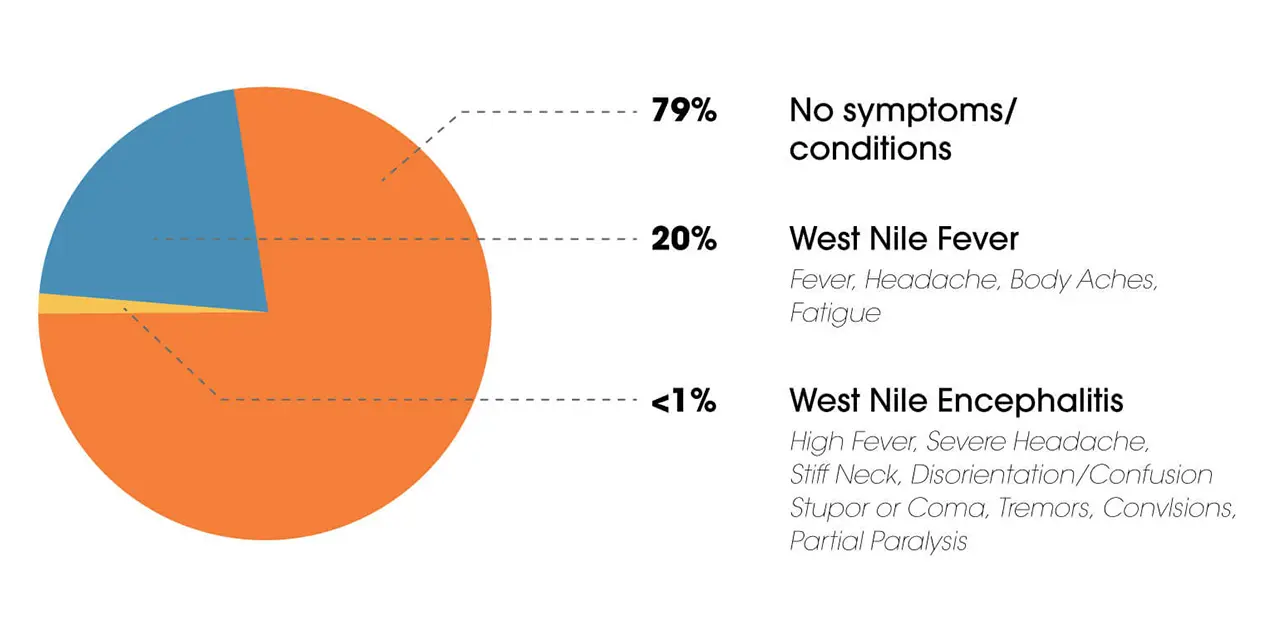West Nile Virus: What You Need To Know
Signs and symptoms of this mosquito-borne illness.
What is West Nile virus?
Simply stated, it’s a virus spread by certain types of mosquitoes that have bitten infected birds. Not all mosquitoes carry it. Mosquito species that may carry the West Nile virus include Culex pipiens (Eastern United States, and urban and residential areas of the United States north of 36–39°N), Culex tarsalis (Midwest and West), and Culex quinquefasciatus (Southeast).
How can I avoid getting it?
The best way to avoid West Nile virus is to prevent mosquito bites. To avoid bites, apply a repellent with DEET or Picaridin and wear long sleeves and long pants. Also make sure your home window and door screens are intact, and empty any containers such as birdbaths that contain standing water at least twice a week. OFF!® Deep Woods® Insect Repellents have DEET and help protect against mosquitoes that may carry West Nile virus.
When is it most common?
Mosquitoes carry the highest amounts of the virus in the early fall, which is why the incidence of the disease may increase in late August to early September. The risk of disease decreases as the weather becomes colder and mosquitoes die off.
Did You Know? In the United States in 2014 and 2015, most occurrences of West Nile virus were in California, followed by Texas.1
What are signs and symptoms?
If you become infected, you may experience no symptoms or mild flu-like symptoms, such as fever and mild headache. However, some infected people can develop more severe conditions like encephalitis or meningitis. Always consult your physician if you are experiencing any of these symptoms.

Source: CDC.gov (http://www.cdc.gov/ncidod/dvbid/westnile/clinicians/clindesc.htm)
As of January 12, 2016, a total of 48 states and the District of Columbia have reported West Nile virus infections in people, birds, or mosquitoes in 2015. Overall, 2,060 cases of West Nile virus disease in people have been reported to CDC. Of these, 1,360 (66%) were classified as neuroinvasive disease (such as meningitis or encephalitis) and 700 (34%) were classified as non-neuroinvasive disease.
Learn more about West Nile virus
US Centers for Disease Control—West Nile Fact Sheet
www.cdc.gov/ncidod/dvbid/westnile/wnv_factsheet.htm
1"West Nile virus Disease Cases and Presumptive Viremic ..." 2015. 29 Jan. 2016
Disclaimer
This is provided for your information only and is not intended to diagnose or treat any medical condition. Should you have any symptoms or concerns, please contact your doctor.
Related

Lyme Disease: What You Need To Know
How to avoid being bitten by ticks that may carry Lyme disease.


Your Ally In The Fight Against Mosquitoes
OFF!® has a variety of repellents that help keep your family protected from mosquitoes.

